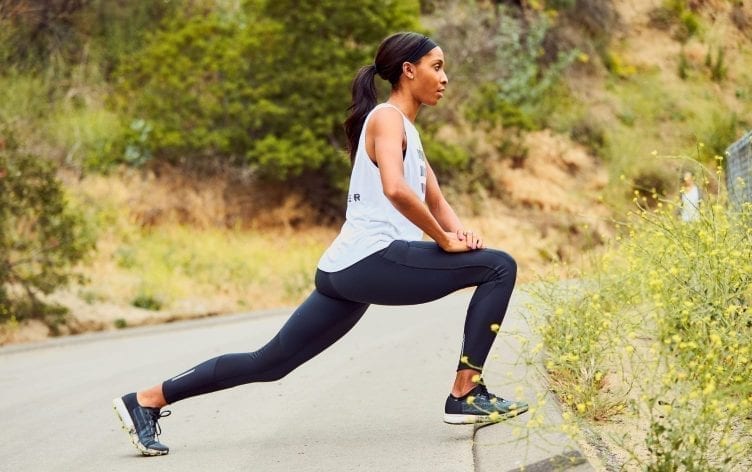
While walking is an excellent low to moderately intense workout that’s easy on the joints, you’ll still need to recover properly to improve fitness and avoid injuries. Here, seven steps to include in your post-walk recovery routine:
COOL DOWN
Whether you’ve gone for a long endurance walk or thrown in some intervals, it’s important to take time to let your body cool down before you head back inside. This allows you to slowly lower your heart rate and get rid of any lactic acid that could potentially cause soreness and a heavy feeling in your legs. A 10-minute walking cool down or completing a few yoga poses are great options post-workout.
REHYDRATE
One of the most important but often overlooked aspects of recovery is hydration. Even during low-to-moderate intensity workouts, the body loses fluid through sweat that needs to be replaced. If you don’t, recovery takes longer and your performance for your next workout will be negatively affected. In the hour that follows your walking workout, drink plenty of water. If you’re doing long distance training for a walking marathon or have completed a particularly intense workout in hot weather, an electrolyte replacement drink might also be needed. If you’re unsure exactly how much fluid you’ve lost during exercise, weighing yourself before and after workouts is one way you can gauge how much fluid you need to drink to rehydrate properly. You can also track your hydration with an app like MyFitnessPal.
REPLENISH YOUR ENERGY STORES
Consuming healthy, nutrient-rich food after a walk is a must to allow your muscle tissue to repair and get stronger. Skip processed, sugary foods and load up on leafy greens, lean protein like chicken, fish or even a post-workout protein shake.
STRETCH
Stretching as soon as your workout is finished and while your muscles are still warm can help reduce muscle soreness and improve your flexibility — both of which can help you improve your overall fitness and decrease your chances of injury. If you don’t have a ton of time to go through a series of stretches, concentrate on your weak spots. For example, if hamstring tightness is normally an issue, put most of your attention there. When you have the time, try this seated routine that targets many of the common sore spots for walkers.
REDUCE MUSCLE SORENESS
While nutrition and stretching are big pieces to this puzzle, there are other things you can do to help prevent soreness so you can feel better and work out more frequently:
- Massage: This helps improve circulation and relax aching muscles.
- Recovery tools: If you don’t have money or time for a professional massage, try recovery tools like foam rollers, lacrosse balls or a Theragun to loosen up sore spots.
- Ice: Try taking an ice bath or simply icing any sore spots like your knees, lower back or shoulders post-walk.
TRACK YOUR PROGRESS
Setting goals and tracking your progress is an important part of the big picture. Instead of waiting and possibly forgetting about it all together, upload your workout info to your favorite fitness app shortly after you’ve finished your walk. This allows you to see the work you’ve put in and can provide a mental boost when you realize how much you’re progressing.

